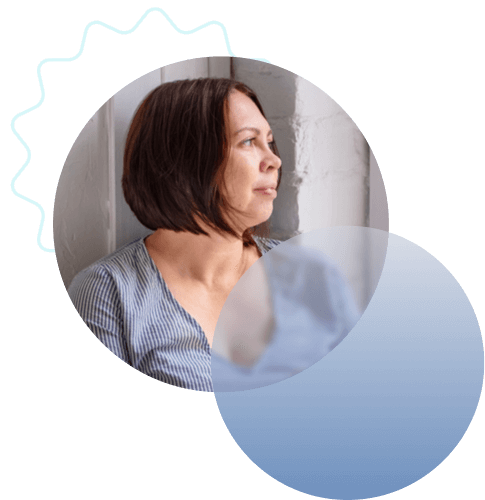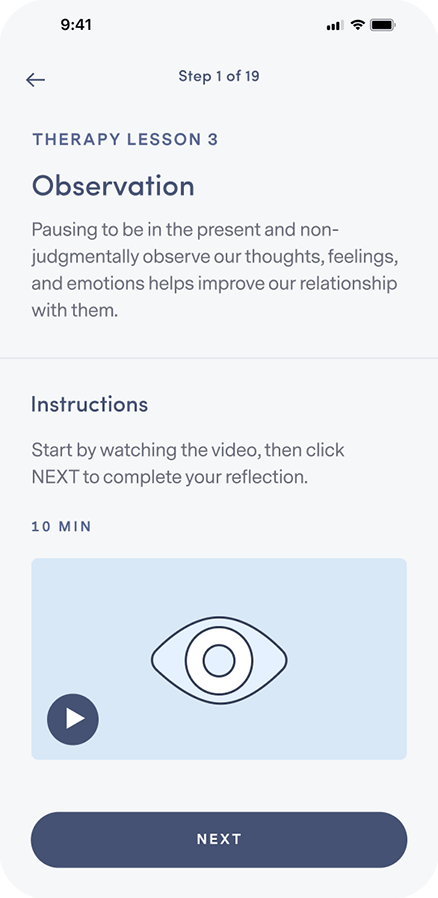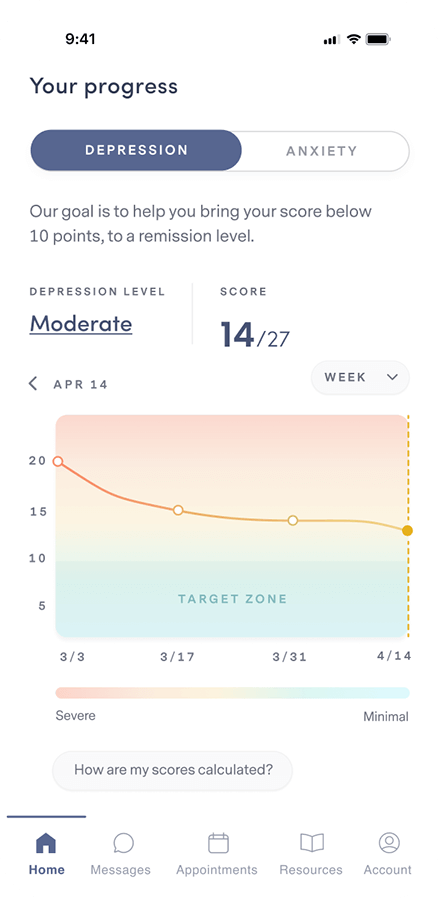HOW WE TREAT ASD
Life-changing online care for acute stress disorder
Our providers understand the challenges of ASD, and have real-world experience helping people just like you.
Start with a free assessment
HOW WE TREAT ASD
Our providers understand the challenges of ASD, and have real-world experience helping people just like you.
Start with a free assessment
Our Care
Different people experience ASD in different ways. That’s why our providers work 1:1 with you to personalize treatment to your unique needs.
When medication is necessary, our psychiatric providers analyze 100+ data points to determine the most tolerable and effective prescription for you.
Our program combines cognitive and behavioral therapy with independent skill practice—all of which have been clinically proven to work for a wide range of symptoms.
Mental Health condition
The psychological and physical symptoms of ASD can be very distressing to someone. Psychological and behavioral symptoms of ASD may include flashbacks, nightmares or intrusive memories, avoiding anything that reminds them of the event.

Everyone processes traumatic experiences in their own way. While some people may be able to cope well with stressful or frightening events, other people may develop what is known as acute stress disorder.
Acute stress disorder (ASD) is a mental health condition that may be a precursor to post traumatic stress disorder (PTSD). People who struggle with acute stress disorder have recently experienced or witnessed a deeply traumatic event. Examples of such events include natural disasters (e.g. floods, fires, earthquakes), physical or sexual assault, car accidents, the sudden death of a loved one, or receiving a life-threatening diagnosis.

Someone with ASD may also experience physical symptoms such as a pounding heart, nausea, and difficulty breathing.
HOW IT WORKS

Let your provider know how you’re feeling, get to know you, and provide 1:1 support.

Get questions or concerns off your chest between video visits by messaging your provider at any time.

Learn how to integrate new thought and behavior patterns into your daily life.

Complete weekly check-ins so your provider can track your progress and, if necessary, adjust your treatment and/or medication.
Our plan options
Because quality mental health care shouldn’t be out of reach for anyone.
PERSONALIZED
clinically-proven
comprehensive
Free Assessment
86% of our members feel better within 12 weeks.
We accept insurance.





FREQUENTLY ASKED QUESTIONS
If your question isn’t answered below, view our full list of FAQs here.
Brightside is available to people 18 years and older in the states where Brightside operates who believe they may be experiencing depression and may benefit from treatment.
Remote care is not a good fit for people with certain conditions or situations. These include (but are not limited to):
Our providers do not treat, and do not prescribe for adhd.
If any of these describe you, it’s best for you to be seen by a provider in person so you can get the care that’s right for you.
Brightside makes it easy to get top quality depression care from the privacy of home.
Here’s how Psychiatry works:
Here’s how Therapy works:
When scheduling your first appointment, you can browse all of our available providers in your state. Take a look at their profiles and check open times to find the best fit for you. Every Brightside provider undergoes a rigorous hiring and vetting process to ensure the highest quality care.
A mental health provider will diagnose OCD by asking you about the following three things:
A diagnosis of ASD can be made three days to one month after a traumatic event. While ASD is a short-term condition—and many people get better on their own—some people may benefit from timely diagnosis and treatment.
Many of the symptoms of ASD are almost identical to those of PTSD. However, a diagnosis of PTSD will only be considered if the symptoms persist for more than 30 days or first appear more than one month after the trauma has occurred.
Though many people who are diagnosed with ASD do not go on to develop PTSD, it is thought that having ASD may increase a person’s risk of developing PTSD. A prompt diagnosis and treatment of ASD can help people manage the condition and reduce the risk of developing PTSD.
Everyone processes traumatic experiences uniquely, and an event which does not trigger ASD in one person may trigger the condition in another.
With that being said, a variety of factors may increase the risk of someone developing the condition.
These factors include:
It is normal to feel afraid or uneasy following a traumatic event. However, if your symptoms have lasted anywhere from three days to one month directly following a traumatic event, you may be suffering from ASD.
Make an appointment with your healthcare provider to discuss treatment options that may be right for you.
From medication to therapy, there are a variety of treatment options to help with the symptoms of acute stress disorder.
Medication
Medication is not typically a first-line treatment for ASD. If recommended by a healthcare provider at all, benzodiazepines (clonazepam, etc.) will typically be used only in low doses, for the short-term relief of severe anxiety symptoms. Benzodiazepines carry the risk of dependence if used long-term and may also increase the risk of developing PTSD.
Beta-blockers may also be prescribed to help with some of the physical symptoms of ASD, such as a pounding heart, nausea, and difficulty breathing.
Therapy
While there are many different types of therapy, trauma-focused cognitive behavioral therapy (TFCBT) is the top recommended treatment for ASD. If used in a timely manner, TFCBT has been proven to reduce the likelihood of ASD developing into PTSD.
TFCBT helps someone become aware of and adjust unhelpful thought patterns and behaviors related to the trauma. TFCBT is usually started no sooner than two weeks after the traumatic event, and consists of six weekly sessions of 60 to 90 minutes.
Self-Care, Coping, and Support
Many treatment plans for ASD involve aspects of self-care. Aspects of self-care can include:
Personal safety is also a major part of the self-care work when healing from a traumatic event. After a single traumatic episode, people are better able to process the experience when they know that they and their loved ones are safe.